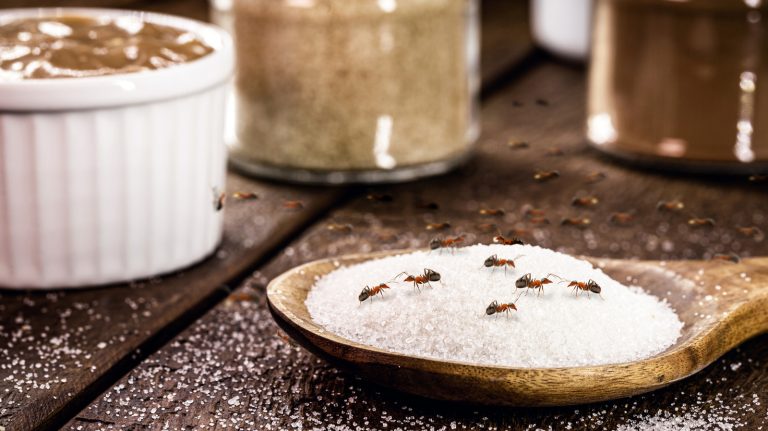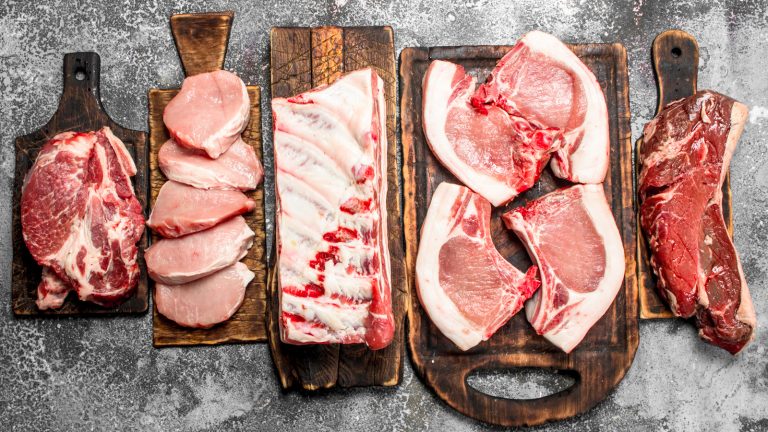While chef Gordon Ramsay may be famous the world over for his culinary prowess, television shows, and clever insults, you may not know that he is also an impressive athlete. Not only do we trust his advice in the kitchen for cooking techniques and well-developed flavors, but he also knows the value of eating healthy and properly fueling your body. While we may not be training for triathlons like Ramsay or withstanding long days of filming in hot kitchens, it’s still important to get your body the protein and carbohydrates that it needs to function well.
When you think of protein, lean chicken breasts or a nicely marbled steak may be the first things that comes to mind, however, when prices at the grocery store are high, it’s good to know what other sources of protein are available and affordable. In an Ask Me Anything on Reddit, Ramsay was asked about less expensive protein options for those on a budget, and he recommended a few plant-based foods. “I would recommend that you get adventurous with pulses — chickpeas, beans, lentils. … Brown rice? Phenomenal,” Ramsay wrote.
Ramsay is no stranger to pulses — he gives classic English breakfast staple beans on toast an elegant twist, and he even loves them for a midnight snack. If perhaps you’re feeling skeptical about getting enough protein from plant-based sources, even Gordon Ramsay changed his mind about vegan food, so go ahead and give these powerful protein sources a try if you’re looking to spend less at the grocery store.
Chickpeas provide plenty of protein
Chickpeas go by two names (the other being garbanzo beans), which can sometime lead to confusion. No matter what name you call them by, garbanzo beans are a nutrient-dense and extremely affordable protein that Gordon Ramsay recommends including in your diet. A one-cup serving of cooked chickpeas provides 14.5 grams of protein, as well as 12.5 grams of fiber, which is slower to digest and therefore helps you to feel more full for a longer amount of time.
While there are opinions on whether dried chickpeas or canned chickpeas are better, dried chickpeas are usually an even cheaper option than their canned counterparts — just make sure you have the time and forethought to soak them overnight and then cook them. Canned garbanzos, however, are still a great affordable protein to add into your rotation. An easy way to start is to make a simple recipe like these crispy chickpeas, where you can adjust the spices and flavorings to your liking. You can snack on them by the handful, or use them as toppings or as the main protein in a salad. Chickpeas make a great substitute for fish in a vegan tuna salad, and they are an essential part of falafel, which you should be cooking in your air fryer. There are so many ways to add flavor to canned chickpeas, which go hand in hand with our best uses for canned chickpeas, making the protein-packed pulse easy to incorporate into your meals.
Beans are a beautiful protein powerhouse
Beans are a staple food of so many cultures around the world due to their nutritional value, cost, convenience, and shelf life. There are popular varieties like black and kidney beans, but there are also gorgeous heirloom beans like green flageolet beans or deep purple-speckled scarlet runner beans. We can tell you everything you’ve ever wondered about beans, but what you need to know is that they are a great source of protein that is inexpensive and will keep you feeling full for a long time. While different varieties of beans have their own protein levels, some popular beans like black, soy, navy, kidney, and pinto contain just over 15 grams of protein per one cup of cooked beans. Beans also provide healthy nutrients like vitamins B, E, and K as well as copper and zinc.
There are plenty of canned beans you should keep in your pantry, but it’s hard to beat the low price and long shelf life of a bag of dried beans. Cooking beans from scratch makes this affordable protein exciting and easily customizable. Remember that when cooking a pot of beans, you need flavorful aromatics to match the flavor profile of whatever you’re serving with the beans. Our Cuban black beans recipe is an easy place to start if you’re new to working with canned beans. Once you’re comfortable both cooking beans from scratch and using canned beans, dive into our 20 bean recipes that are bound to be a hit and keep them on rotation for your homemade meals.
Lentils are a less-expensive source of protein that are easy to cook
Lentils are very easy to cook, and different types of lentils will have varying applications due to their cooked consistencies. Firm, more plump lentils like green or black are excellent when chilled and should be the star of your next salad. Softer lentils, like red or yellow, are perfect for one-pot Indian stews. You can add aromatics and spices to your lentil cooking water or use broth to impart flavor, like in this easy spiced lentils recipe, and more firm varieties, like beluga or french lentils, can be marinated with vinegars, dressings, and herbs to keep things exciting and more flavorful. If you don’t want to cook them from scratch, canned lentils are readily available in most grocery stores, and we have some great ways to use canned lentils.
There are many different types of lentils in the world, but most lentils boast about 18 grams of protein per cooked cup. In addition to protein, lentils have about 90% of the daily recommended amount of folate, and are also high in fiber. Lentils are known to contain phytic acid, which can hinder the absorption of some minerals, but this can be offset by soaking the lentils before cooking them. Even devoted meat lovers can be swayed to use lentils for a Korean barbecue-inspired vegetarian meal. Lentils make excellent meatballs or meatloaf, and you can use a 1:1 ratio when swapping for ground beef, or you can include other vegetables for taste and texture like in this vegetarian lentil and mushroom BBQ meatballs recipe.
Brown rice is lighter in protein but heavy in nutritional benefits
There is a nutritional difference between white and brown rice, and brown rice is by far the better choice if you’re seeking an inexpensive protein. Brown rice cooks slower than white rice due to the husk of the rice grain remaining in tact, and the nutritional benefits are worth the longer cook time. One cup of long-grain brown rice has about 5 grams of protein, which is on the lower end of vegetarian proteins, but brown rice also contains other nutritional benefits that are valuable as well. Brown rice is high in fiber, which is great for regulating blood sugar and cholesterol levels, and it’s a good source of magnesium, manganese, folate, and selenium. You can pair brown rice with beans for more protein, and be sure to incorporate some of our favorite ingredients to level up rice and beans.
Rice is easy to prepare, especially if you have a rice cooker. The good news is that you can skip out on washing brown rice, but you should be soaking it if you have the time. You can think of rice as a blank canvas, and there are so many easy tricks to amp up the flavor of brown rice. Make sue to follow Gordon Ramsay’s rule for when to season rice to set yourself up for success in the kitchen. Keep in mind that brown rice doesn’t last as long as other rices, so be sure to not buy more brown rice than you’ll be able to eat in about half a year, unless you store the grains in the freezer.





